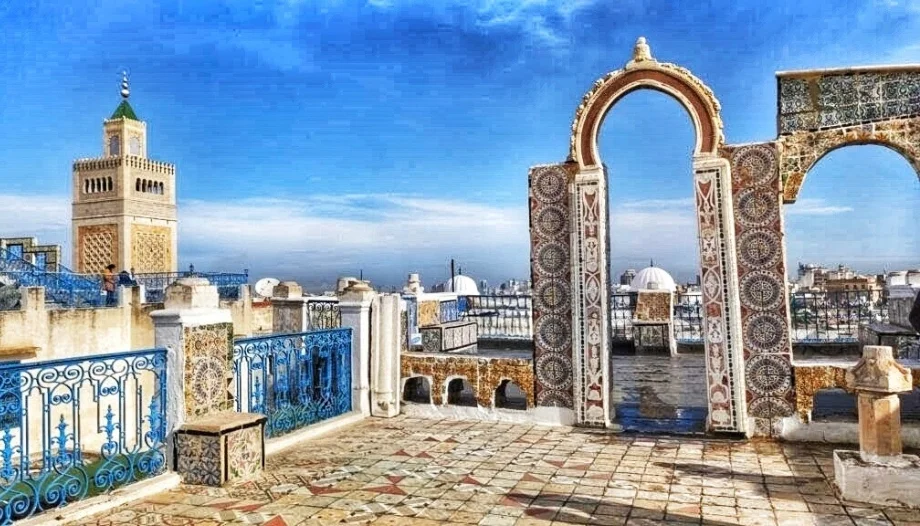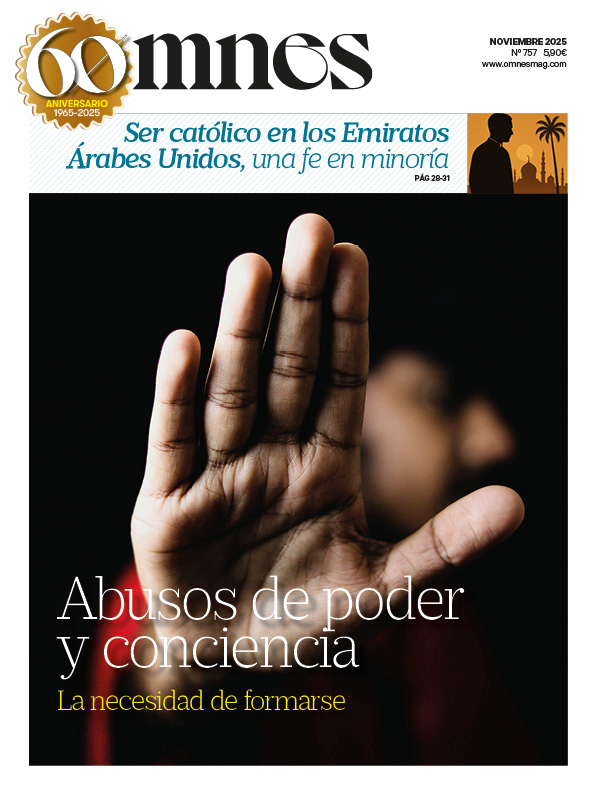Carthage from above
I am writing this article on August 28, the liturgical memorial of St. Augustine (and the day of the saint's death) in a Jubilee year in which a pope belonging to the Augustinian Order has been elected.
I could not help remembering 25 years ago, when, during another Jubilee, I was in Tunisia to study Arabic for a month at a local university. Tunis: next to ancient Carthage, where Augustine was trained as a student and orator.
I still remember the thrill of crossing the Mediterranean for the first time by plane and flying over the coast of Africa right over the ruins of the ancient city of Dido (Tunis airport is precisely in Carthage).
It was an intense period, very hot, in class from 7:30 in the morning and then on the beach of Sidi Bou Said, visiting the medina of Tunis, the ruins of Carthage, walking along the wide avenues of the new city built by the French and Italians. And on weekends, excursions to wonderful places like Sousse, Kairouan, Hammamet or the island of Djerba.
Where Africa is born
Precisely this area of the Maghrebaround ancient Carthage, was first called Africa. The name, in fact, was coined by the Romans (like that of Palestine for another province, after another war) after the final defeat of Carthage (146 B.C.), by the Afri, a Berber tribe established there. Originally, Africa only designated the Roman province corresponding to present-day Tunisia and part of Algeria and Libya (Africa Proconsularis). The etymology is uncertain: from the Berber ifri ("cave"), from the Phoenician ʿafar ("dust") or from the Latin aprica ("sunny"). It was not until the Middle Ages that the term came to designate the entire continent.
Some data
Algeria and Tunisia are today two states of Mediterranean Africa (also called Maghreb), close not only geographically but also culturally. However, while Algeria, with more than 2.38 million km², is the largest country in Africa and has about 45 million inhabitants, Tunisia is one of the smallest (163,000 km² with a population of 12 million inhabitants). Algeria has a less diversified and less developed economy, although it is very rich in gas and oil, making it one of the world's leading exporters. Tunisia, on the other hand, has made agriculture, tourism and services its main economic sources and also has one of the highest literacy rates in the region.
Much of the territory of both countries is occupied by the Sahara, but the northern coastal areas are home to fertile plains (in Algeria also mountain ranges).
From Numidia to Carthage: the "new city".
Even before Carthage, and before being called Africa, the coast of Algeria and Tunisia, like the rest of the Maghreb, was (and is) inhabited by indigenous populations: the Berbers, or Amazigh (in Berber: "free men"), settled for millennia in the mountains, plains and deserts of the region. Their tribal organization and languages gave rise to a culture that resisted the waves of peoples and empires that invaded and dominated the territory (including the Arabs). In Algeria, Numidia represented the strongest political expression of this world: a Berber kingdom that became a protagonist in the wars between Carthage and Rome, allying itself either with one or the other. Figures such as Masinissa, Numidian king, marked the history of the Mediterranean, demonstrating that the local peoples were actors and not just spectators.
However, Carthage was the true protagonist of the cultural flowering of North Africa. The city was founded in the 9th century B.C. by the Phoenicians of Tyre, on the coast of what is now modern-day Carthage. B.C. by the Phoenicians from Tyre, on the coast of the present-day Lebanon (the same name Qart Hadash, in Phoenician, means "new city" or New Tyre).
From the beginning, Carthage maintained strong ties with the Phoenician motherland, inheriting the cult of the deities Baal Hammon and Tanit, nautical techniques and, above all, the Punic language, a western variant of Phoenician (a Semitic language very close to Hebrew) that continued to be spoken for centuries throughout North Africa, even after the fall of Carthage (proof of this is the Poenulus, "The Little Carthaginian", a comedy by Plautus from the 3rd-2nd century BC, in which a passage appears in Punic. St. Augustine himself, bishop of Hippo, later recalled that Punic was still spoken in North Africa).
Carthage must be destroyed
Carthage became the most powerful Phoenician colony (founding in turn other colonies, among them Cartagena, in Spain), but soon had to face a Rome also in full expansion. The three Punic Wars (3rd-2nd centuries BC) were fought precisely between the two dominant powers of the Mediterranean (and the Second War was fought by Hannibal Barca, with his famous crossing of the Alps with elephants) and led to the definitive defeat of Carthage and its end in 146 BC, at the hands of Scipio Africanus. However, on the ruins of the ancient city, Julius Caesar and then Augustus re-founded Colonia Iulia Carthago, which became one of the most splendid cities of the Empire, to which we owe rhetoricians, Fathers of the Church (not only Augustine, but also Tertullian and Cyprian of Carthage), saints and martyrs such as Perpetua and Felicitas.
Rome's victory transformed Tunisia and Algeria into flourishing African provinces (the first, later divided, was Africa Proconsularis), with the construction of famous cities and monuments (such as the amphitheater of El Jem, in Tunis, and the mosaics preserved in the Bardo museum, in Tunis: the largest collection in the world).
Homeland of St. Augustine
Augustine of Hippo (354-430) was born in this province, in Tagaste (today Souk Ahras, in Algeria, not far from the border with Tunisia), to a pagan father and a Christian mother. At a very young age, Augustine moved to Carthage, a vibrant and cosmopolitan Mediterranean metropolis full of leisures, vices, virtues, cultures and religions, to study rhetoric and spend the turbulent years of his youth there, between the theater, various passions and adherence to Manichaeism, which he himself mentions in the Confessions:
"Late I loved you, beauty so old and so new, late I loved you. Yes, because you were inside me and I was outside. There I was looking for you. Deformed, I threw myself upon the beautiful forms of your creatures."
Augustine then left for Rome and Milan, from where, after his conversion to Christianity, he returned to his homeland, this time to Hippo Regius (Hippo Regius, today Annaba, on the Algerian coast near the Tunisian border), where he was ordained priest in 391 and then bishop in 395. Hippo was the scene of his 30 years of tireless pastoral and intellectual activity, until his death in 430, during the siege of the Vandals of Genseric, of Arian faith, in a fatal moment for Roman Africa. In Annaba today stands the basilica-sanctuary of St. Augustine, built in 1900 on the hill overlooking the city.
Berbers, Arabs, Ottomans, pirates, etc.
The Vandals conquered Carthage in 439 and reigned there for a century, but in 534 the Byzantines reconquered it with the exarchate, losing it a few years later. In fact, the 7th century saw the arrival of Islam, with the foundation of Kairouan (670), the first Islamic city of the Maghreb and still today a religious center of primary importance (Tunis, instead, was born as a Punic-Roman settlement and became an Arab capital in the 9th century, while Algiers, already a Roman city, was renamed with this name in the 10th century, for the islets off its coast, in Arabic al-Jazāʾir, "the islands").
Here too, as in Libya, an interesting combination of Arab-Berber culture and Islamic mysticism (Sufism) was created, which has left important traces in local traditions. Tunisia and Algeria were also gateways for Andalusian influences: after the Reconquest in Spain, many Muslims and Jews found refuge in Tunis, Algiers and other coastal cities, bringing with them knowledge, music, culinary and architectural traditions.








